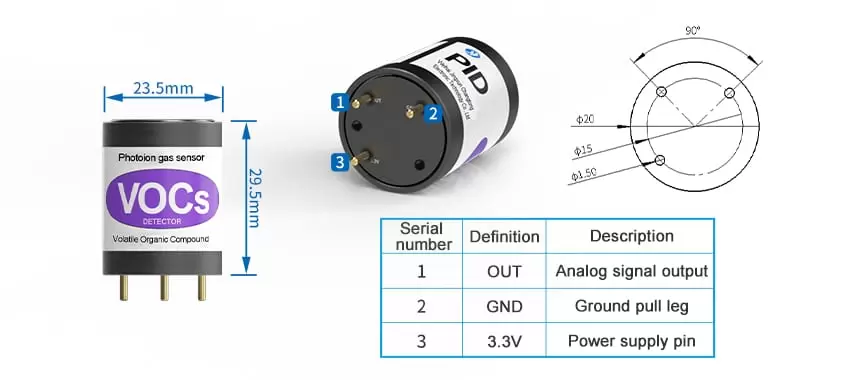-
How Gas Sensors are Changing Emergency Response
- Gas sensors play a vital role in emergency response and are essential tools for detecting hazardous gases in the environment. These sensors have undergone significant advancements in recent years, making them more sensitive, selective, an……
- Chat Online
-
Description
Gas sensors play a vital role in emergency response and are essential tools for detecting hazardous gases in the environment. These sensors have undergone significant advancements in recent years, making them more sensitive, selective, and portable. The latest developments in gas sensor technology are revolutionizing emergency response by providing real-time gas detection and warning systems that can save lives.
One of the most important ways gas sensor are changing emergency response is by providing early warnings for gas leaks and other dangerous conditions. In the past, gas detection relied on manual inspection and measurement, which could take time and was often inaccurate. However, with gas sensors, real-time measurements are possible, allowing prompt detection of hazardous conditions and immediate action in response. This capability is crucial in preventing injury or death from gas leaks, fires, or other emergencies.
Another way gas sensor are changing emergency response is by enabling remote monitoring and control in hazardous situations. Some gas sensors are now equipped with wireless connectivity, cloud-based data storage, and analytics capabilities, making it possible to monitor and control multiple sensors from a central location. This technology makes it easier to coordinate emergency response efforts and provide timely assistance to those in need.
Recently
gas sensor have also been developed that can detect multiple hazardous gases simultaneously. These sensors offer a more comprehensive approach to emergency response, as they can detect a range of hazardous gases rather than just a single gas. These multi-gas sensors can be used in various industrial settings, where multiple hazardous gases must be monitored simultaneously, such as petroleum refineries, chemical plants, and wastewater treatment facilities.
Gas sensor are also changing emergency response by being integrated into personal protective equipment (PPE). Workers in hazardous environments often wear PPE to protect themselves from toxic gases, but these devices do not always detect dangerous levels of gas. By integrating gas sensors into PPE, workers can be warned of gas levels that are hazardous and take action to avoid exposure.
In addition to these advancements, the integration of artificial intelligence (AI) and machine learning algorithms in gas sensor technology is poised to revolutionize emergency response further. Machine learning algorithms can analyze vast quantities of data from gas sensors, allowing for more accurate predictions of potential hazards. AI can also automate gas sensor calibration, routine maintenance, and emergency response procedures, further reducing response times and minimizing the risk to first responders and other personnel involved.
In conclusion
gas sensors are changing emergency response by providing real-time monitoring and detection of hazardous gases, enabling remote monitoring and control, detecting multiple gases simultaneously, and integrating with PPE. The recent advancements in gas sensor technology, particularly the integration of AI and machine learning algorithms, further improve the accuracy and efficiency of gas detectors, leading to safer work environments and better emergency response capabilities. With more research and development, gas sensors will continue to play a vital role in emergency response, saving lives and minimizing the impact of hazardous events.
-
Recommend:
-
-
How Gas Sensors are Changing Emergency Response
Gas sensors play a vital role in emergency response and are…
-
Harnessing the Power of Gas Sensors for Environmental Protection
Air pollution poses a significant threat to human health an…
-
Advancements in Gas Sensor Technology
Indoor air quality (IAQ) is a crucial aspect of our overall…
-
Transforming Industrial Processes with Gas Sensor Innovation
Industrial processes form a crucial part of our economy tod…
-
 : +86 155 8830 2704
: +86 155 8830 2704 : jxdziot@gmail.com
: jxdziot@gmail.com
